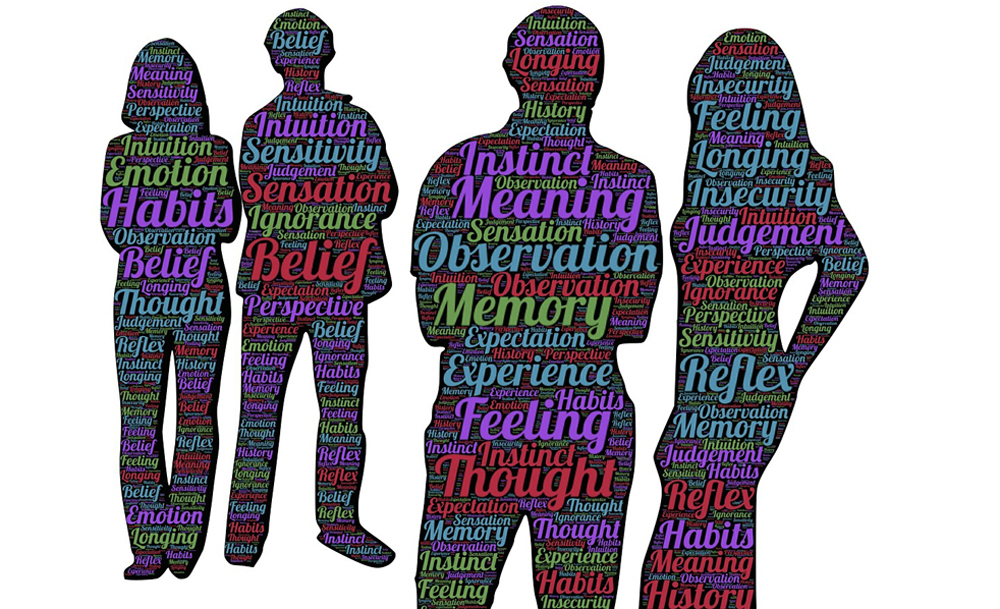
Do you look up with your eyes when you’re listening to someone or sharing a story?
Do you breathe from the middle part of your chest?
Do you memorize info by doing rather than watching?
Depending on how you answered each question, you’re either a visual, auditory or kinesthetic learner. I learned a lot about different learning styles and the human brain at an intensive training I recently attended given by Michael Bernoff, an expert in communications and human interaction.
I’m going to share some tips on understanding the various types of learners. Specifically, I will give you cues to watch for so that you can quickly assess the preferred learning styles of people you meet. This will help you not only in your business life, but in your personal life.
Visual Learners: People like me who are visual generally learn or memorize information by seeing rather than hearing or feeling. Approximately 65 percent of the population are visual learners.
Here’s a personal example. When someone is telling me a joke, I’m creating the entire picture in my mind. So, if the picture they painted doesn’t make sense to me at the end, then I don’t laugh (which definitely disappoints the joke teller).
You can identify people whose preferred style is visual because they:
- Talk fast, using animated body language and facial expressions
- Look up when listening to you or sharing a story
- Use their arms and hands at eye level as they explain things
- Like themselves and their surroundings to be neat and tidy
- Breathe from the top of their lungs
How to Communicate with Visual Learners
Use descriptive words that paint a picture such as imagine, reveal, clear blue sky, take a peek, sunny beach and so on. Don’t rely overly on verbal instructions – use images, whiteboards, even YouTube videos. These learners are more likely to make decisions based on how something looks.
Auditory Learners: If this is your learning style, you need to hear and talk through information to begin to understand it. Auditory learners are happy to sit through a lecture – they’re great listeners and stats show they remember up to 75% of what they hear.
You can identify people whose preferred style is auditory because they:
- Talk to themselves and often mouth the words even if there is no sound
- Enunciate their words carefully
- Move their eyes sideways as they take in information
- Keep their arms and hands at neck level when trying to express themselves
- Find noisy environments very distracting
- Breathe from the middle of their chest
How to Communicate with Auditory Learners
Auditory learners respond best to sounds, so use words such as hear, resonate, listen, rings a bell or loud and clear if you want to grab their attention. They’re happy to take part in a discussion and will follow along if you read them instructions. They want you to tell them what you need or what your product or service will do for them.
Kinesthetic Learners: They make decisions based on how something “feels.” Kinesthetic learners often move more slowly than the other types of learners. They respond best to physical touch and sometimes stand very close in conversations – sometimes even taking two steps forward to close the gap again if you back away!
You can identify people whose preferred style is kinesthetic because they:
- Look down when explaining something
- Move arms and legs about waist level when accentuating a story
- Breathe from the bottom of their lungs
- Memorize by doing something rather than watching or listening to someone explain it
How to Communicate with Kinesthetic Learners
Use words such as grasp, tap into, heated argument, firm foundation and cool/calm/collected. You need to incorporate activities into your pitch or presentation to keep this type of learner engaged. When making decisions they will do so based on how they feel.
![]()
Appealing to All 3 Types of Learners
Now…how do you reach ALL three types of learners at the same time? During your seminar, presentation or marketing materials, remember that:
- Visual learners love it if you provide lots to look at. Use pictures in place of text where you can, map out colorful diagrams in data and add photos to your PowerPoint presentation.
- Auditory learners will listen if you vary the pitch and tone of your speech to keep things interesting. Use anecdotes and let them ask lots of questions to promote discussion – they’re usually the ones raising their hands!
- Kinesthetic learners can be the trickiest to reach in a group. They get fidgety when sitting through a lengthy lecture. They’ll learn best from activities, whether it’s roleplaying a situation or working as a group to come up with ideas.
You’ll become a much more effective communicator when you realize that how you deliver information is as important as what you’re delivering. Make your verbal and body language meaningful to the person on the other end. And, have some fun while you learn about yourself and those around you!
Need some help figuring out what type of learner you are or understanding how your employees’ learning styles impact your business?
I’ve been working in HR and Leadership development for over 35 years and have connected with all types of learners. Get in touch with me to discuss how we can improve communication in your personal life and in the workplace.
Business Leadership, Productivity, Team Management